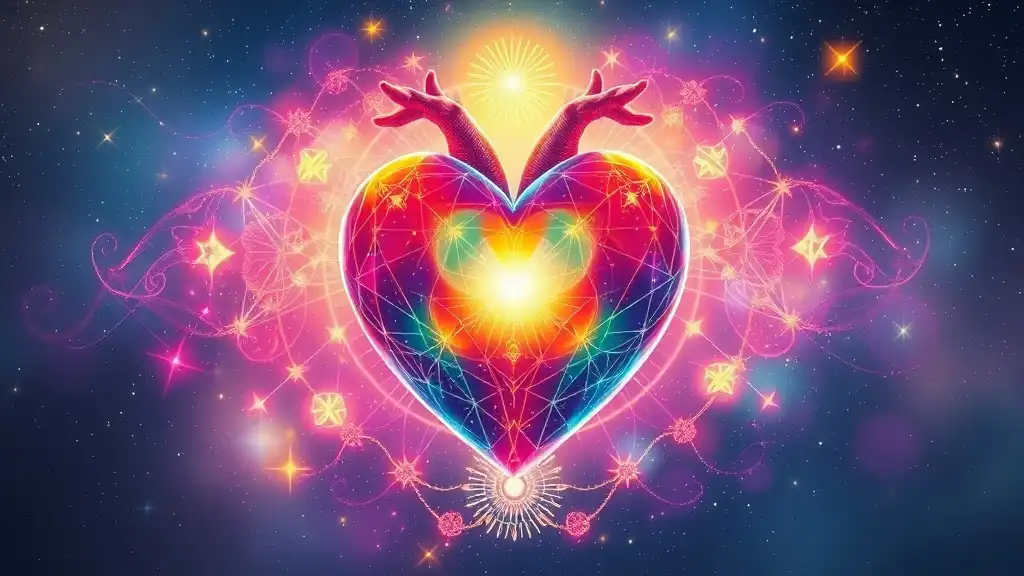The heart has long been regarded as a powerful symbol in various spiritual traditions throughout history. Understanding the spiritual meaning of the heart is essential, as it can guide us on our journey of personal growth, emotional healing, and deeper connections with ourselves and others. By exploring this sacred organ, we uncover not just its significance in our physical lives but also its profound relevance in the realm of the spirit.
The Heart as a Symbol
Historical Context
From the ancient Egyptians who believed the heart was the seat of the soul, to the Greeks who equated it with courage and emotion, the heart has captured the human imagination for millennia. In many cultures, the heart is seen as the core of one's being, encapsulating our essence and our truth. The heart goes beyond biology; it is a symbol of love, passion, and spirituality, embodying the very nature of humanity.
The Heart in Various Spiritual Traditions
In Christianity, the heart often symbolizes divine love and compassion, with references to the “sacred heart of Jesus” as a source of unconditional love. This symbolizes that the heart is not just a physical organ, but a divine channel for love and grace.
In Buddhism, the heart represents compassion and loving-kindness, essential qualities for spiritual awakening. The heart is viewed as the source of empathy that connects us to all living beings, reinforcing our interconnectedness.
Within Hinduism, the heart is associated with the Anahata Chakra, or heart chakra, representing love, balance, and connection with divine energy. It serves as a bridge between the physical and spiritual realms, emphasizing the importance of love in understanding one’s purpose in life.
Indigenous spiritualities often view the heart as a living force, intrinsically linked to nature and the universe. In these traditions, the heart is considered a vital component of holistic well-being—spiritually, mentally, and physically.

The Spiritual Significance of the Heart
The Heart as the Center of Emotion
The heart is perceived as the epicenter of our emotions—encompassing love, joy, and compassion while also holding space for pain, grief, and heartbreak. Love signifies the highest expression of human emotion, often described as the ultimate purpose of life. When we tap into love, we unlock the potential for profound connections, healing, and growth.
Additionally, our hearts hold the capacity for forgiveness, allowing us to release negativity and past hurts. Emotional growth often comes from the strength of our heart, teaching us essential life lessons through experiences of joy and sorrow alike.
The Heart as a Portal to the Soul
The heart serves as a bridge to higher consciousness, acting as a doorway to the soul’s wisdom. Many spiritual practices emphasize the need to listen to the heart to discover one's true path. Intuition, often described as a ‘gut feeling’, originates from the heart, guiding us toward decisions aligned with our soul's purpose.
Inner guidance comes when we learn to quiet the mind and tune into the subtle whispers of our heart. By honoring these insights, we can move toward a more authentic existence, aligning our actions with our inner truth.

The Heart Chakra
Understanding the Heart Chakra
The heart chakra, or Anahata, located at the center of the chest, symbolizes love, balance, and compassion. It serves as a balancing force between the lower and upper chakras, connecting our earthly experiences with the spiritual realms. When our heart chakra is open and functioning well, we experience feelings of warmth, compassion, and connection.
However, an imbalanced heart chakra may lead to emotional distress and disconnection from oneself and others. Physically, this can manifest in health issues related to the heart and lungs, reminding us of the intricate link between our emotional state and our physical well-being.
Balancing and Healing the Heart Chakra
To heal and balance the heart chakra, various techniques can be employed. Meditation is a powerful tool, focusing on visualizing healing light infusing the heart space. Breathing exercises can also help clear energy blockages, inviting in more love and compassion.
Affirmations such as “I am worthy of love” or “I open my heart to give and receive love” can empower individuals to release self-doubt and embrace vulnerability. Practicing these techniques fosters a sense of connection and balance within.

The Heart in Everyday Life
How to Connect with Your Heart Space
In our fast-paced world, it can be easy to forget the importance of our heart space. Mindfulness practices, such as mindful breathing or daily gratitude, can help us reconnect with our hearts. Taking a few moments each day to reflect on what we are grateful for enhances our awareness of love and abundance in our lives.
Journaling is another effective method. Writing down feelings, experiences, and reflections helps illuminate the heart’s desires and concerns, allowing for deeper self-discovery and emotional release.
Manifesting Love and Compassion
Cultivating love and compassion can transform not just our personal relationships, but also our connection with the world. Practices such as random acts of kindness or conscious listening can create ripples of love that extend beyond ourselves.
Gratitude plays a significant role in this cultivation process. By regularly acknowledging the blessings in our lives, we shift our focus away from negativity and open our hearts to greater love and understanding.

The Heart's Lessons
Learning from Heartbreak
Although heartbreak can feel overwhelming, it often holds invaluable spiritual lessons. Each moment of pain can guide us toward profound personal growth, teaching us resilience, empathy, and the importance of self-love.
Transforming suffering into growth requires conscious effort. By examining our heartbreak, we can uncover patterns and areas of ourselves that need nurturing, leading us toward healing and renewal.
Embracing Vulnerability
The power of vulnerability is a key aspect of spiritual practice. Being open and authentic in expressing our feelings allows for deeper connections with ourselves and others. Vulnerability fosters trust, creating safe spaces for love to flourish.
The willingness to be vulnerable can transform relationships, paving the way for a richer, more authentic experience of life, built on mutual connection and understanding.

Conclusion
The heart embodies a profound spiritual significance that transcends its physical function. By engaging with the heart's wisdom, we can unlock pathways to love, compassion, and a deeper understanding of ourselves and our place in the universe. As we embark on this journey, we empower ourselves to embrace our true essence and connect authentically with others. The heart invites us to explore its depths, guiding us toward spiritual awareness, fulfillment, and a life imbued with love.



















